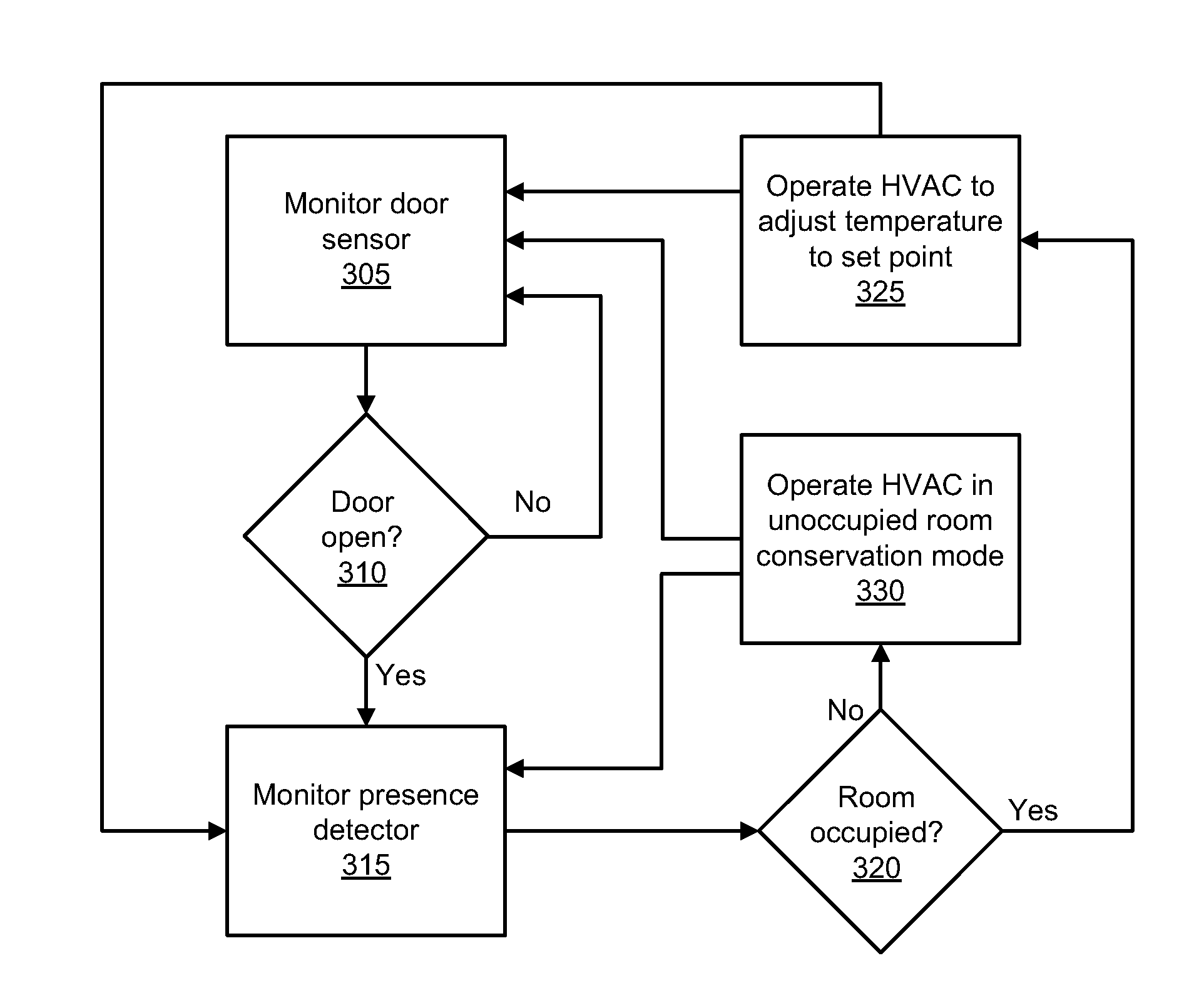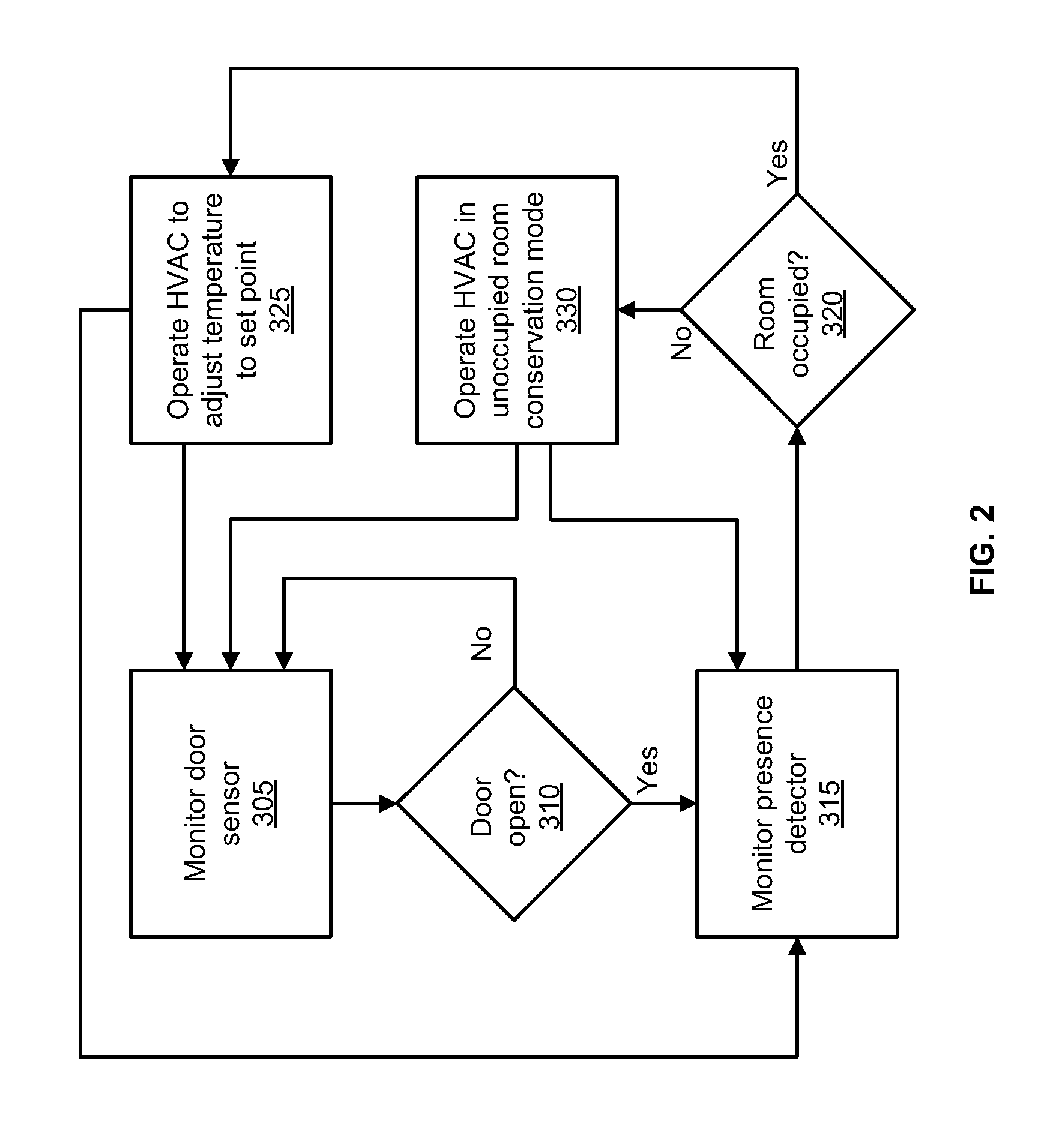Systems and methods for controlling the temperature of a room based on occupancy
a technology of occupancy and temperature control, applied in the field of automatic environment control system operation, can solve the problems of wasting energy, increasing the utility bill of the hotel, heating and cooling these unoccupied rooms is not only a waste of energy, but also of money, so as to reduce energy consumption
- Summary
- Abstract
- Description
- Claims
- Application Information
AI Technical Summary
Benefits of technology
Problems solved by technology
Method used
Image
Examples
Embodiment Construction
.”
BRIEF DESCRIPTION OF THE DRAWINGS
[0014]Features, aspects, and embodiments are described in conjunction with the attached drawings, in which:
[0015]FIG. 1 is a plot of the temperatures in a room over time using a conventional environment control system to maintain the temperature of the room;
[0016]FIG. 2 is a flow chart illustrating an example process for operating an environment control system, such as that illustrated in FIG. 5, in accordance with an embodiment;
[0017]FIG. 3 is a flow chart illustrating an example process for operating an environment control system in a power saving mode according to one embodiment;
[0018]FIG. 4 is an example graph of the temperature versus time when implementing the process of FIG. 3; and
[0019]FIG. 5 is a diagram illustrating an example environment control system in accordance with one embodiment.
DETAILED DESCRIPTION
[0020]The following detailed description is directed to certain specific embodiments. However, it will be understood that these embodi...
PUM
 Login to View More
Login to View More Abstract
Description
Claims
Application Information
 Login to View More
Login to View More - R&D
- Intellectual Property
- Life Sciences
- Materials
- Tech Scout
- Unparalleled Data Quality
- Higher Quality Content
- 60% Fewer Hallucinations
Browse by: Latest US Patents, China's latest patents, Technical Efficacy Thesaurus, Application Domain, Technology Topic, Popular Technical Reports.
© 2025 PatSnap. All rights reserved.Legal|Privacy policy|Modern Slavery Act Transparency Statement|Sitemap|About US| Contact US: help@patsnap.com



